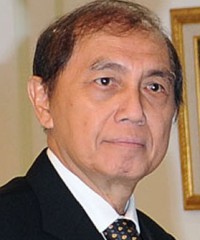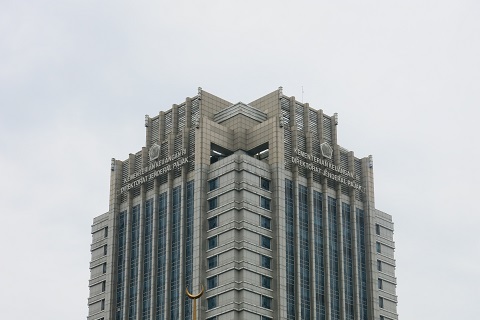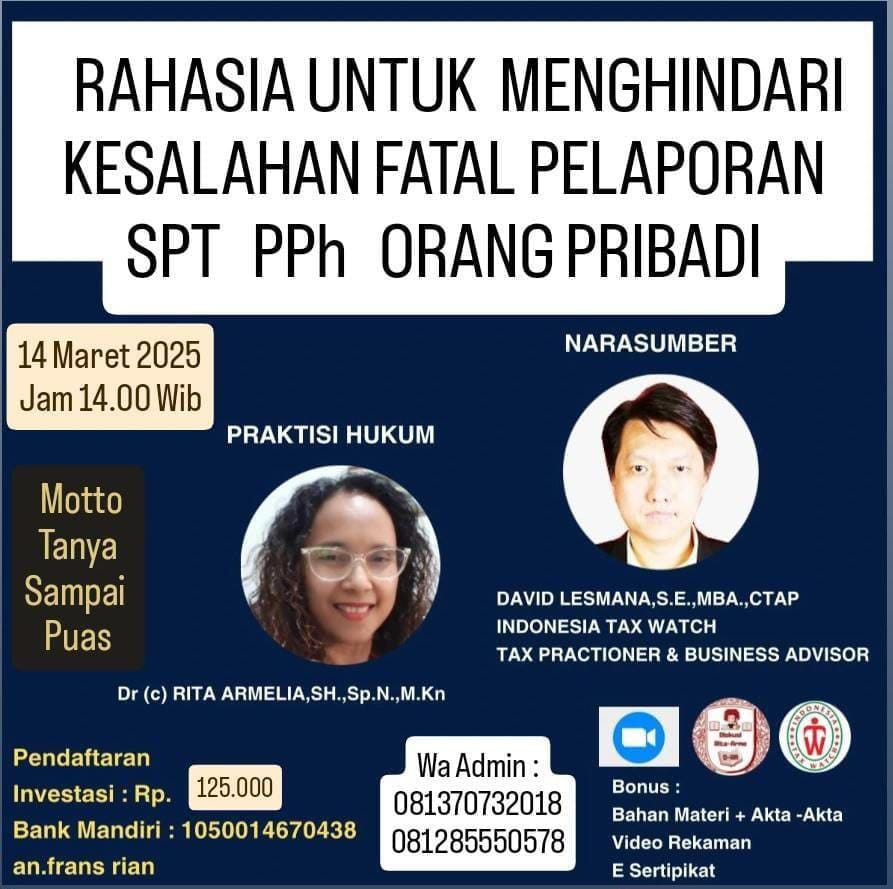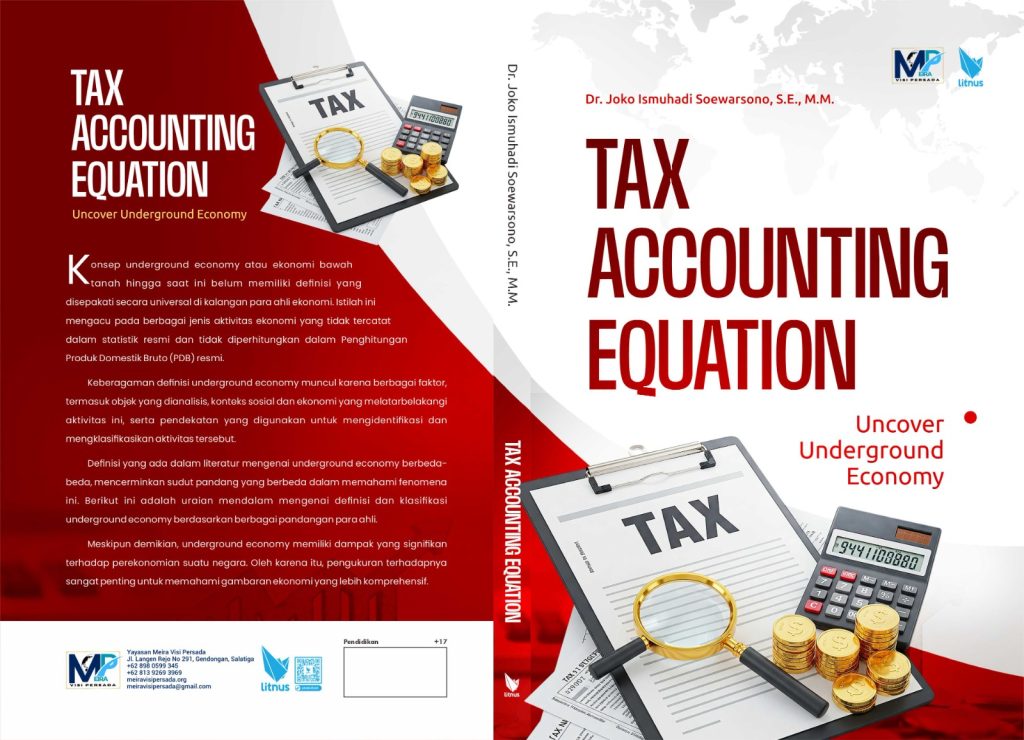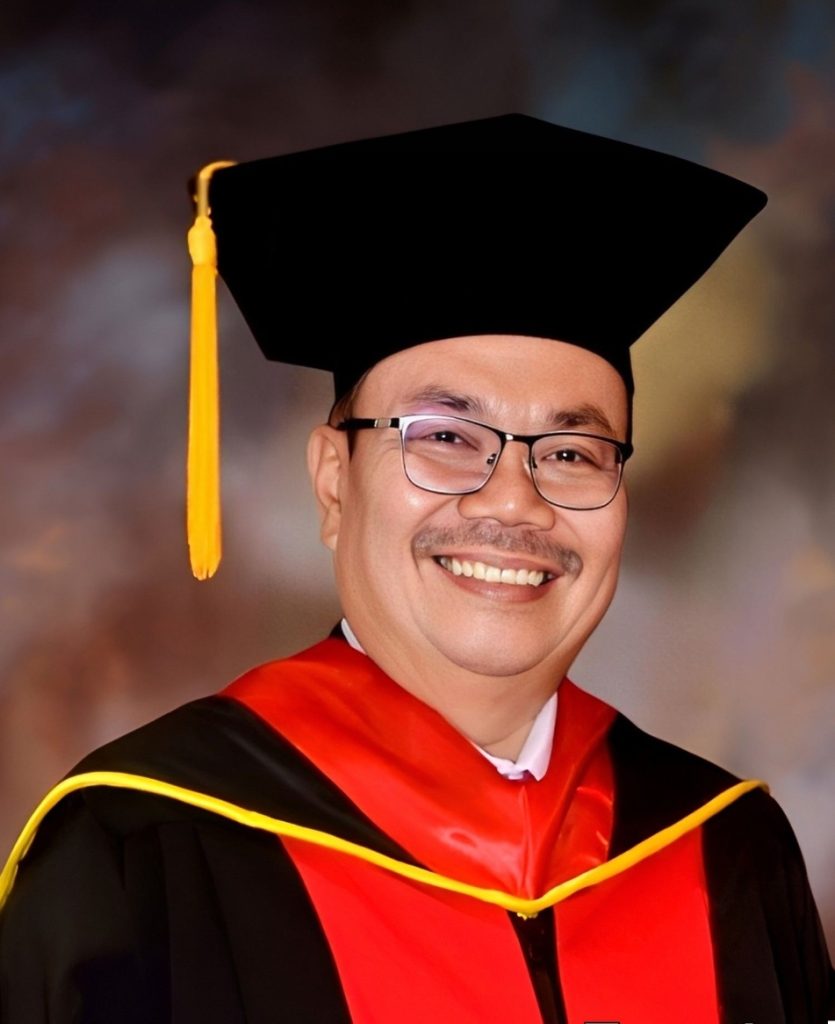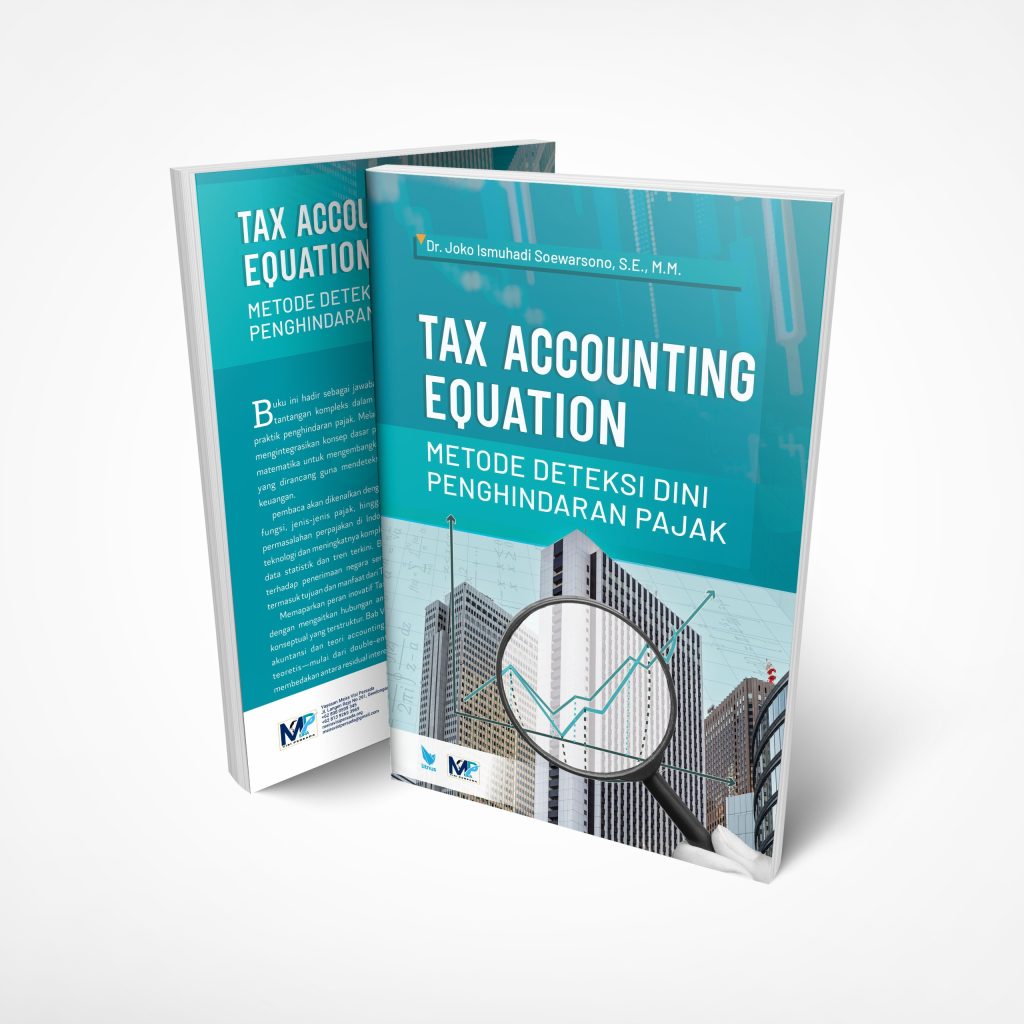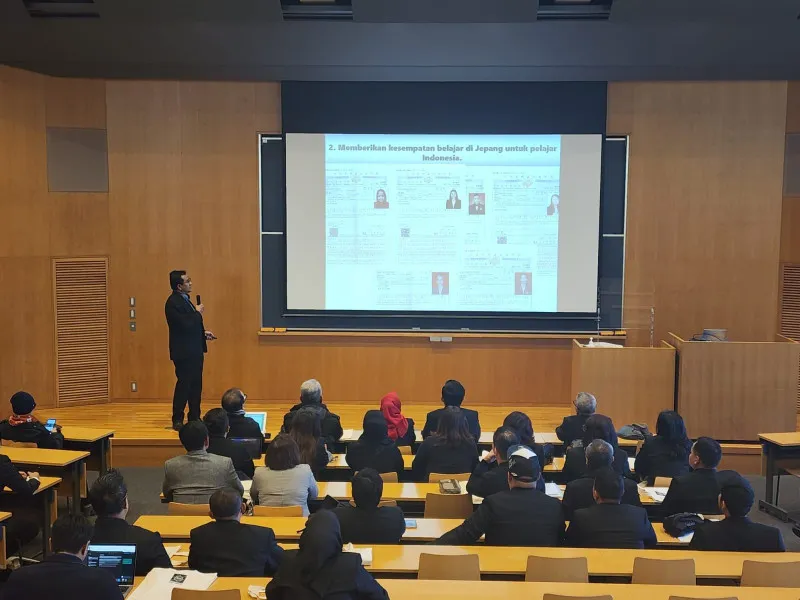
Uncovering Underground Economy Activity: An Analysis of Ismuhadi’s Equation (TAE) in the Indonesian Context
- Ekonomi
Monday, 07 April 2025 04:50 WIB
Jakarta, fiskusnews.com:
I. Introduction: The Persistent Challenge of Measuring the Indonesian Underground Economy
The underground economy (UE) represents a significant facet of economic activity in Indonesia, carrying substantial implications for governmental tax revenue, the trajectory of national economic development, and the principles of fair market competition. Globally, the shadow economy’s impact is considerable, with its size varying dramatically from 15% to 70% of GDP across different nations, indicating a strong dependency on specific contextual factors such as development levels, institutional robustness, and prevailing cultural norms. Within Indonesia, the estimated scale of the shadow economy is particularly noteworthy, ranging between 30% and 40% of the nation’s total Gross Domestic Product. This substantial level of unreported economic activity suggests a considerable degree of leakage from the formal economic system, potentially leading to distortions in official GDP calculations, complicating the formulation of effective economic policies, and creating an uneven competitive landscape for businesses operating within the formal sector. Recognizing the underground economy as an inherent and significant component of most countries’ economic landscapes, including Indonesia, underscores the necessity of its careful consideration in economic analysis and policymaking, rather than treating it as a peripheral anomaly.
A fundamental obstacle in understanding and addressing the underground economy lies in the inherent difficulties associated with its quantification. By its very nature, the underground economy involves activities intentionally concealed from governmental authorities, resulting in a lack of direct records within official government databases. This absence of formal documentation, including tax returns from participants in the underground economy, directly contributes to losses in potential government revenue and complicates any attempts at accurate assessment. The pervasive challenge of measuring the underground economy or black market is widely acknowledged, reinforcing the persistent difficulties faced by researchers and policymakers alike. This inherent difficulty necessitates a continuous pursuit of innovative and reliable measurement techniques to better understand this elusive aspect of economic activity.
In response to these challenges, Dr. Joko Ismuhadi has developed a Tax Accounting Equation (TAE), specifically intended as a forensic tool for uncovering underground economy activity (UEA) within the Indonesian context. The designation of TAE as a “forensic tool” suggests its primary application in the detailed investigation of financial irregularities and the detection of potential tax evasion, rather than as a broad macroeconomic estimation technique for the overall size of the underground economy. The existence of multiple scholarly and professional articles analyzing Dr. Joko Ismuhadi’s Tax Accounting Equation in relation to uncovering underground economic activity further indicates a sustained academic and professional interest in its potential applications. This report aims to provide a comprehensive analysis of Ismuhadi’s Equation (TAE) and its role in uncovering Underground Economy Activity (UEA) in Indonesia. It will delve into the definition of TAE, explore its likely mechanism, examine its potential practical applications, discuss any limitations or critiques found within the research material, and compare it with other established methodologies used for studying and measuring the underground economy in Indonesia. Ultimately, this analysis seeks to illuminate the potential contribution of Dr. Ismuhadi’s work to the ongoing efforts to understand and address the challenges posed by the underground economy in Indonesia.
II. Defining Dr. Joko Ismuhadi’s Tax Accounting Equation (TAE)
An initial search for “Ismuhadi’s Equation” and “TAE equation” reveals that these terms do not possess a universally recognized definition outside the specific domain of Indonesian tax analysis. Various equations and concepts are discussed across different fields, but none directly align with the context of the underground economy as it pertains to the user’s query. Notably, the acronym “TAE” is also associated with “Total Analytical Error” in medical and scientific contexts, highlighting the importance of focusing specifically on the connection with “Ismuhadi” and “tax accounting” to avoid conceptual conflation. The ambiguity surrounding the acronym underscores the need for clear and context-specific terminology when referring to Dr. Ismuhadi’s work.
A crucial piece of information emerges from the research material in the form of a mention of “Joko Ismuhadi’s Tax Accounting Equation” within the context of Indonesian tax analysis, specifically linking it to Article 4 paragraph (1) of the Income Tax Law. This legal provision in Indonesia defines what constitutes income for taxation purposes, suggesting that Dr. Ismuhadi’s equation is likely concerned with how income is recognized and reported under Indonesian tax regulations. This connection to the legal definition of income implies that TAE may be designed to meticulously examine financial transactions and records against the legal criteria for taxable income in Indonesia, potentially identifying discrepancies that could signal the presence of hidden income derived from underground economic activities.
Further investigation into sources that directly mention Dr. Joko Ismuhadi and his Tax Accounting Equation provides more specific context. Multiple sources consistently refer to “Dr. Joko Ismuhadi’s Tax Accounting Equation” or its Indonesian equivalent, “Persamaan Akuntansi Pajak Dr. Joko Ismuhadi,” as a forensic tool specifically developed for Indonesian tax analysis and for the purpose of uncovering activities within the underground economy. This repeated emphasis on its forensic nature suggests a methodology that is focused on detailed investigation, the detection of anomalies within financial data, and potentially the quantification of unreported income that is characteristic of UEA.
The research material also reveals that Joko Ismuhadi is the author of a publication titled “Persamaan Akuntansi Pajak (Tax Accounting Equation),” with one source indicating it was published in 2022 by the Directorate General of Taxes, Ministry of Finance of the Republic of Indonesia. The publication of this work by the official tax authority in Indonesia lends significant credibility and suggests that Dr. Ismuhadi’s equation holds potential importance within the Indonesian tax system. It implies a formal articulation of the equation and its underlying principles within official tax administration channels.
To understand the likely foundation upon which Dr. Ismuhadi’s Tax Accounting Equation is built, it is essential to consider the fundamental principles of the general accounting equation: Assets = Liabilities + Equity, and its expanded forms. This basic accounting framework serves as the cornerstone of financial reporting and analysis on a global scale. Dr. Ismuhadi’s “Tax Accounting Equation” likely builds upon these universally accepted accounting principles, adapting them to incorporate elements that are specific to taxation. The expanded form of the accounting equation, which includes revenues and expenses (Assets = Liabilities + Owner’s Capital + (Revenues – Expenses – Withdrawals)) , is particularly relevant as it incorporates elements of income and expenditure that are directly linked to tax obligations and the potential for underreporting. The inclusion of these elements suggests that TAE might focus on analyzing these components within financial records to identify discrepancies that could indicate unreported income or the overstatement of expenses, both of which are common tactics for reducing tax liability within the context of the underground economy.
Given the available context, it is highly probable that Dr. Ismuhadi’s Tax Accounting Equation represents a specific adaptation or modification of the standard accounting equation, intentionally designed to address tax-related elements and facilitate the detection of unreported income, a defining characteristic of the underground economy. The close proximity of the mention of the fundamental accounting equation to the reference of Dr. Ismuhadi’s work strongly suggests that TAE builds directly upon this foundational principle of accounting. It is likely that TAE maintains the core balancing principle of the accounting equation but incorporates additional variables or places specific emphasis on certain relationships within it to highlight information relevant to taxation. The explicit statement that the “Persamaan Akuntansi Pajak (Tax Accounting Equation/TAE) yang dikembangkan oleh Dr. Joko Ismuhadi Soewarsono” translates to “Tax Accounting Equation (TAE) developed by Dr. Joko Ismuhadi Soewarsono” confirms the authorship and intended meaning of the acronym in this specific context.
III. Understanding Underground Economy Activity (UEA) in Indonesia
Underground Economy Activity (UEA) can be defined as a broad spectrum of economic transactions and activities that are intentionally concealed from government authorities for a variety of reasons, the most prominent being the evasion of taxes and the avoidance of regulatory oversight. This concealment extends beyond purely illicit activities, encompassing the unreported production and trade of legal goods and services, which, in many cases, represents a more significant source of underground income than illegal activities themselves. This includes otherwise legitimate businesses that operate “off the books” to avoid taxes and regulatory burdens, posing a considerable challenge for tax authorities in identifying and capturing this segment of the economy. The definition of UEA is not static but rather evolves over time as lawmakers redefine what is considered legal or subject to taxation. The terms “shadow economy,” “black market,” and “informal economy” are often used interchangeably with “underground economy,” highlighting the overlapping and complex nature of defining and categorizing these hidden forms of economic activity.
Within the specific context of Indonesia, UEA exhibits several distinct characteristics. Concrete examples include the smuggling of various goods such as wood, fuel oil, and illegal merchandise, as well as the economic activities of unregistered street vendors. The underground economy in Indonesia involves both the informal sector and the black market, with the informal sector often characterized by small-scale business units, self-employed individuals, unregistered firms, limited access to formal credit facilities, and a prevalence of operations in border and peripheral regions. Notably, a positive correlation has been observed between the extent of corruption and the level of underground economic activity in Indonesia, suggesting that institutional weaknesses and governance issues may contribute to its prevalence. Furthermore, the textile and textile products sector in Indonesia demonstrates a significant underground economy network that is often interconnected with the formal economic sector, indicating that UEA is not always a separate phenomenon but can be intertwined with mainstream economic activities. Research also suggests that UEA in Indonesia is sensitive to changes in individual tax policies and tends to increase significantly in response to such changes, as well as during periods of rising unemployment. The Indonesian government itself recognizes the multifaceted nature of UEA by categorizing and mapping it into illegal activity, underground economy, and informal economy, employing different strategies and approaches for each category.
The forms of UEA prevalent in Indonesia are diverse, encompassing both activities involving illegal goods and services, as well as the unreported aspects of legal economic endeavors. Globally, black market activities include the trade of illegal drugs, prostitution (where prohibited), illegal currency transactions, and human trafficking, many of which likely have counterparts within Indonesia. Specifically within Indonesia, key components of the shadow economy include smuggling, drug trafficking, and the trade of unregulated goods. Sectors such as agriculture, fisheries, transportation, warehousing, and information and communication have been identified as particularly susceptible to shadow economy activities within the country. Further Indonesia-specific examples include the illicit trade of wood, fuel oil, protected animal species, and illegal goods originating from countries like China. Conceptually, UEA in Indonesia can be understood through the framework of illegal, unreported, unrecorded, and informal economies, each representing a different dimension of hidden economic activity.
IV. The Mechanism of Ismuhadi’s Equation in Uncovering UEA
The provided research material does not offer a detailed explanation of the specific formula or the precise mechanism through which Dr. Joko Ismuhadi’s Tax Accounting Equation operates. While the equation is frequently mentioned as a forensic tool for uncovering UEA and tax evasion in Indonesia, the available information primarily focuses on its conceptual role and potential applications. This suggests that the current focus in the accessible literature is more on the intended purpose and broad framework of the equation rather than its intricate technical details.
One significant clue regarding the equation’s mechanism lies in its direct connection to Article 4 paragraph (1) of the Indonesian Income Tax Law, which defines income. This linkage strongly implies that Dr. Ismuhadi’s Tax Accounting Equation likely involves a rigorous analysis of financial data to ensure that all forms of economic benefit meeting the legal definition of income under Indonesian law are accurately reported and subjected to taxation. By scrutinizing financial records against these legal criteria, the equation may be designed to identify discrepancies or anomalies that could indicate the presence of hidden income derived from activities within the underground economy.
Furthermore, the statement that Dr. Ismuhadi’s Tax Accounting Equation builds upon the foundational principles of the standard accounting equation (Assets = Liabilities + Equity) provides another crucial insight. This suggests that TAE retains the core balancing principles of accounting but likely expands upon this framework by incorporating additional variables or by focusing on specific relationships within the equation that are particularly relevant to taxation. The aim would be to highlight information that could reveal potential areas of non-compliance and unreported income associated with UEA.
The indication that Dr. Joko Ismuhadi Soewarsono’s Tax Accounting Equation aims to close tax loopholes by potentially amending Article 4 paragraph (1) of the Income Tax Law suggests that the equation may have a dual purpose. It might not only serve as a tool for detecting existing instances of UEA and related tax evasion but also as a framework for identifying and potentially addressing weaknesses or ambiguities within the current tax law that facilitate such activities. This implies that TAE could contribute to both the detection of current tax evasion and the development of legal reforms aimed at preventing future occurrences.
Given the available information, it is reasonable to infer that the mechanism of Dr. Ismuhadi’s Tax Accounting Equation likely involves a detailed and forensic analysis of the interrelationships between a taxpayer’s assets, liabilities, equity, income, and expenses. This analysis probably incorporates tax-specific variables and focuses on identifying deviations from expected balances or patterns that are consistent with accounting principles and Indonesian tax regulations. The ultimate goal would be to uncover inconsistencies within financial records that strongly suggest the presence of unreported economic activity and income that should be subject to taxation but is instead concealed within the underground economy in Indonesia. The “forensic” nature of the tool implies a meticulous and investigative approach to examining financial data to reveal patterns or discrepancies that are indicative of hidden transactions or underreported income.
V. Practical Applications of TAE for Analyzing the Indonesian Underground Economy
The research material clearly indicates that Dr. Joko Ismuhadi’s Tax Accounting Equation is a subject of active discussion and analysis within the context of the Indonesian economy and taxation. Several articles specifically address the potential practical application of TAE in analyzing and uncovering underground economy activity within Indonesia. Titles such as “Uncovering Underground Economy Activity: An Analysis of Dr. Joko Ismuhadi’s Tax Accounting Equation” suggest a direct exploration of how TAE can be utilized to identify and potentially quantify hidden economic activities within the Indonesian landscape. The existence of these articles points to a scholarly and professional interest in moving beyond the theoretical framework of TAE towards its actual implementation.
Furthermore, the mention of a video focusing on “Joko Ismuhadi’s Tax Accounting Equation: A Forensic Tool for Indonesian Tax Analysis” indicates an effort to disseminate information about TAE and potentially illustrate its practical application in the realm of forensic tax analysis related to UEA. The use of a video format could suggest an attempt to explain complex concepts or even showcase specific examples of how TAE is employed in real-world scenarios to detect tax-related irregularities associated with the underground economy.
The reference to a short course on taxation where Dr. Joko Ismuhadi discussed the analysis of the underground economy using his Tax Accounting Equation further underscores the practical relevance of TAE. The inclusion of this topic in a professional training setting implies that TAE is considered a potentially valuable methodology for tax professionals in Indonesia, suggesting that they may be learning how to apply it in their work to identify and address issues related to the underground economy.
Collectively, these sources suggest that Dr. Ismuhadi’s TAE is not merely a theoretical concept but is being actively considered and potentially implemented as a method for the early detection of tax avoidance and embezzlement schemes that are frequently linked to activities within the underground economy in Indonesia. The title of an article, “Early Detection of Tax Avoidance and/or Embezzlement: An Analysis of the Tax Accounting Equation in Indonesia,” directly highlights this intended practical outcome of applying TAE – to proactively identify illicit financial activities connected to tax evasion within the Indonesian context. This focus on early detection suggests that TAE might be designed to flag suspicious patterns or anomalies in financial data that could indicate potential tax evasion related to UEA before it escalates or results in significant losses of government revenue.
However, it is important to acknowledge that the provided research material does not contain specific, detailed examples or quantitative results from instances where Dr. Ismuhadi’s Tax Accounting Equation has been applied in practice to analyze or estimate the scale of underground economic activities in different regions or sectors within Indonesia. The emphasis in the available snippets primarily remains on the conceptual framework, potential applications, and the ongoing discussion surrounding TAE as a tool for forensic tax analysis, rather than on concrete case studies or statistical outputs derived from its actual implementation. Therefore, while there is clear interest and exploration into the practical uses of TAE, the evidence for widespread, documented application and its tangible impact on measuring the Indonesian underground economy within the provided material is limited.
VI. Critiques and Discussions Regarding the Effectiveness of TAE
The research material provided does not contain any explicit critiques or discussions that directly question the effectiveness and validity of Dr. Joko Ismuhadi’s Tax Accounting Equation in uncovering Underground Economy Activity (UEA). The available snippets generally present TAE as a promising forensic tool for tax analysis in Indonesia, particularly in its potential to detect tax evasion linked to UEA. This absence of direct criticism within the given material does not necessarily imply that TAE is without limitations, but rather that such discussions are not captured in the provided snippets.
However, by examining the broader discussions within the research material regarding the general challenges and limitations of measuring the underground economy using various established methodologies, we can infer potential areas of concern or limitations that might also be relevant to TAE. Measuring the underground economy is inherently difficult due to the hidden nature of the activities involved and the reluctance of participants to disclose information. This challenge is compounded by the complexity of defining and comparing informal economies across different countries with varying legal and regulatory frameworks. If TAE relies on comparisons or data that are influenced by these cross-country differences or definitional complexities, its effectiveness might be impacted.
Furthermore, the measurement of the informal economy is often described as “stubbornly elusive,” with existing methods sometimes lacking replicability and often providing only temporary snapshots. If TAE aims to provide a continuous and reliable measure of UEA, it might face similar challenges in ensuring its long-term effectiveness and consistent application.
Macroeconomic approaches to measuring the underground economy, such as discrepancy methods, transactions approaches, and currency demand approaches, have their own limitations. If TAE implicitly relies on some of the underlying assumptions or data used in these broader methods, it could also be susceptible to similar critiques. For instance, if TAE attempts to reconcile reported income with expected levels of economic activity, it might encounter issues similar to those faced by discrepancy methods, where discrepancies can arise from factors other than just underground activity.
Given that TAE is likely to utilize financial and tax records, it is important to note that these sources inherently provide only a partial view of the hidden economy, as they typically exclude individuals and businesses operating entirely outside the formal tax system. This limitation could potentially affect the comprehensiveness of TAE’s analysis, as it might struggle to capture the activities of those who do not engage with the formal accounting or tax reporting structures.
Even established tax authorities face significant challenges in effectively detecting noncompliance due to resource limitations and the complexities of data matching. This suggests that the real-world effectiveness of TAE in a tax administration context might be influenced by the resources available for its implementation and the quality of the underlying financial data systems in Indonesia.
Finally, direct methods for estimating the hidden economy, like surveys and reviews of tax records, tend to yield lower estimates compared to macroeconomic methods. If TAE primarily relies on accounting and tax data, it might also provide a more conservative estimate of UEA compared to broader economic indicators that attempt to capture all forms of hidden activity.
VII. Alternative Methodologies for Studying and Measuring UEA in Indonesia
Researchers have employed a variety of methodologies to study and measure the underground economy in Indonesia, each with its own set of assumptions, data requirements, strengths, and weaknesses.
One of the most frequently utilized approaches is the Monetary Approach (Currency Demand Approach). This indirect method is predicated on the assumption that underground economic transactions are primarily conducted using cash to avoid detection by authorities, especially tax agencies. It typically involves econometric analysis of the demand for currency in circulation as a function of variables such as the tax burden, interest rates (representing the opportunity cost of holding cash), and the overall level of economic activity (GDP). For example, Tanzi’s currency-demand-equation approach has been widely influential. Several studies have applied this method to estimate the size and evolution of the underground economy in Indonesia over different periods. The monetary approach is often favored due to the relatively easy availability of monetary data. However, it relies on strong assumptions, such as the stability of the relationship between currency demand and its determinants, and that cash is the dominant medium of exchange in the underground economy.
Discrepancy Methods represent another category of indirect approaches. These methods attempt to estimate the size of the informal economy by analyzing discrepancies between different sets of macroeconomic statistics. For instance, the difference between the income-based and expenditure-based measures of GDP, or the disparity between official labor force participation rates and survey-based measures of actual employment, can be interpreted as indicators of underground economic activity. While conceptually simple, these methods often suffer from the limitation that the discrepancies can be caused by factors other than just the underground economy, such as statistical errors or differences in data collection methodologies.
The Transactions Approach, pioneered by Edgar Feige , is based on the quantity theory of money (MV = pT). This method assumes a relatively stable relationship over time between the total volume of transactions in an economy and its official Gross National Product (GNP). By estimating the total value of transactions and comparing it to the official nominal GNP, the difference is attributed to the informal economy. This approach relies on the strong assumption of a constant ratio between transactions and official output, which may not hold true due to changes in financial innovation and economic structure.
The Physical Input (Electricity Consumption) Method uses the total consumption of electricity as a proxy for overall economic activity, based on the idea that both formal and informal production require energy. By analyzing the relationship between electricity consumption and official GDP, deviations can be used to infer the size of the underground economy. However, this method is limited by the fact that not all underground activities are energy-intensive, and the efficiency of electricity use can change over time.
The MIMIC (Multiple Indicators Multiple Causes) Model is a more sophisticated statistical approach that treats the underground economy as a latent (unobserved) variable. It uses structural equation modeling to analyze the relationships between multiple observable “causes” of the underground economy (such as tax burden, unemployment, regulation) and multiple observable “indicators” of its size (such as currency in circulation, labor force participation, GDP per capita). By estimating the relationships within this model, researchers can infer the size and dynamics of the underground economy. The MIMIC model has been applied to study the underground economy in Indonesia. While offering a more comprehensive framework, the results are sensitive to the specification of the model and the choice of causes and indicators.
Tax Auditing represents a direct approach to estimating the underground economy. This method involves analyzing the tax gaps identified through audits conducted by tax authorities. By extrapolating the findings from audited taxpayers to the wider population, an estimate of the total tax evasion and, by extension, the size of the underground economy can be derived. Studies in Indonesia have utilized tax audit data to estimate the scale of the underground economy. However, tax audits are resource-intensive and may not capture the full extent of hidden economic activity, particularly from those entirely outside the formal tax system.
Finally, Survey and Samples involve directly asking individuals or businesses about their involvement in unreported economic activities. While surveys can provide valuable insights into the nature and motivations behind underground economic activity, they are often prone to response bias, as participants may be reluctant to truthfully disclose illegal or tax-evading behavior. Obtaining a representative sample of the underground economy is also a significant challenge.
VIII. Comparative Analysis: TAE and Other Methods
A direct and detailed comparison between Dr. Joko Ismuhadi’s Tax Accounting Equation (TAE) and the other methodologies for measuring the underground economy in Indonesia is constrained by the limited specific information available regarding TAE’s formula and operational mechanism. However, based on its description as a “forensic tool” rooted in accounting principles and Indonesian tax law, we can draw some general comparisons with the alternative methods.
TAE likely adopts a micro-level focus, analyzing financial data and compliance at the individual firm or taxpayer level. This contrasts with macroeconomic methods like the monetary approach, discrepancy methods, and electricity consumption, which use aggregate national data to estimate the overall size of the underground economy. The MIMIC model can bridge this gap by using both macro and micro indicators. Tax auditing and surveys also operate at a micro-level. TAE’s micro-level forensic focus might allow for the identification of specific tax evasion instances that macro methods miss, but it may not provide a comprehensive economy-wide estimate.
The data requirements for TAE would likely include detailed financial statements, tax records, and potentially other firm-specific data. Macro methods rely on national statistics. Tax auditing requires access to tax filings and audit resources. Surveys involve primary data collection. TAE’s potentially granular data needs might make large-scale implementation resource-intensive.
The underlying assumptions of TAE likely involve the premise that deviations from expected accounting relationships and tax compliance patterns, based on accounting principles and Indonesian tax regulations, indicate unreported income and UEA. Other methods have different assumptions, such as the monetary approach assuming cash-based underground transactions and a stable relationship between currency demand and its drivers. The validity of TAE’s estimates would depend on the robustness of its assumptions about accounting and tax compliance in Indonesia within the context of UEA.
In terms of strengths, macroeconomic methods are often inexpensive and provide broad estimates. Direct methods offer qualitative insights and can uncover tax evasion. TAE’s strength as a forensic tool likely lies in its ability to identify specific tax evasion patterns at a micro-level, providing targeted insights for tax enforcement.
Potential weaknesses of TAE, without specific details, could include reliance on the accuracy of reported data, limitations in capturing purely informal cash-based activities, and potential resource intensity for large-scale application. Macro methods rely on strong assumptions, direct methods suffer from response bias, and tax auditing has limited coverage.
Table: Comparison of Methods for Measuring Underground Economy in Indonesia
| Method | Focus | Data Requirements | Key Assumptions | Strengths | Weaknesses |
| Ismuhadi’s TAE | Micro/Forensic | Financial statements, tax records, firm-level data | Deviations from expected accounting and tax compliance indicate UEA | Potential for targeted identification of tax evasion at a micro-level | Specifics unknown, potential reliance on reported data, may miss purely informal cash transactions, scalability might be an issue |
| Monetary Approach | Macro | Currency in circulation, tax rates, GDP | Underground transactions are primarily in cash, stable relationship between variables | Relatively inexpensive, provides broad estimates | Indirect, relies on strong assumptions about cash usage and the relationship between variables |
| Discrepancy Methods | Macro | GDP expenditure & income, official & actual labor force | Differences reflect informal economy | Simple to apply if data is readily available | Can be affected by statistical errors and other factors unrelated to the informal economy |
| Transactions Approach | Macro | Money supply, velocity of money, nominal GNP | Constant ratio between total transactions and official GNP | Provides an estimate of total economic activity | Relies on the strong assumption of a constant ratio, difficult to accurately estimate total transactions |
| Electricity Consumption | Macro | Electricity consumption, GDP | Stable elasticity between electricity use and GDP | Can capture a broad range of economic activity | Not all informal activities require significant electricity, efficiency changes can affect the relationship |
| MIMIC Model | Macro/Micro | Multiple causes (e.g., tax burden), multiple indicators (e.g., currency) | Relationships between latent variable (UE) and observed causes/indicators | Can incorporate multiple factors for a more comprehensive analysis | Complex statistical model, results depend on the correct specification of causes and indicators |
| Tax Auditing | Micro | Tax filings, audit results | Tax non-compliance revealed by audits reflects the underground economy | Directly uncovers tax evasion | Resource-intensive, may not capture all forms of UEA, sampling bias possible |
| Survey and Samples | Micro | Responses to questionnaires | Respondents provide honest and accurate information about UEA participation | Can provide detailed insights into the nature of underground activities | Suffers from response bias, difficulty in reaching participants, potential for underreporting |
IX. Conclusion: The Potential Role of Ismuhadi’s Equation in Understanding Indonesian UEA
Dr. Joko Ismuhadi’s Tax Accounting Equation (TAE) presents a potentially valuable forensic tool for analyzing and uncovering underground economy activity (UEA) within Indonesia. Rooted in fundamental accounting principles and specifically tailored to the Indonesian tax legal framework, particularly concerning the definition of income, TAE offers a unique approach to identifying tax evasion at a micro-level. The equation’s designation as a forensic tool suggests its strength lies in its ability to scrutinize financial data for anomalies and inconsistencies that may indicate unreported income and hidden economic activities. The ongoing discussion and analysis of TAE within Indonesian academic and professional circles, as evidenced by articles, videos, and short courses, highlight its relevance and the interest in its practical application for the early detection of tax avoidance and embezzlement schemes associated with UEA.
However, a complete assessment of TAE’s effectiveness and validity is currently limited by the lack of publicly available detailed information regarding its specific formula, operational mechanism, and comprehensive empirical applications. This opacity hinders a thorough comparison with other established methodologies for measuring UEA, such as the monetary approach, discrepancy methods, transactions approach, electricity consumption method, MIMIC model, tax auditing, and surveys. While TAE’s micro-level forensic focus could provide targeted insights into tax evasion that broader macroeconomic methods might overlook, its ability to provide a comprehensive estimate of the overall scale of UEA across the entire Indonesian economy remains uncertain without further details.
Accurate and reliable measurement of the underground economy in Indonesia is of paramount importance for informed policymaking, effective tax administration, and overall sound economic management. Understanding the scale and nature of UEA is crucial for formulating targeted interventions, optimizing tax revenue collection, and ensuring a level playing field for businesses operating within the formal sector. Therefore, further research and clarification regarding Dr. Ismuhadi’s Tax Accounting Equation are warranted to fully understand its potential contribution to this critical area of economic analysis in Indonesia.
X. Recommendations for Future Research and Application
To further understand and leverage the potential of Dr. Joko Ismuhadi’s Tax Accounting Equation (TAE) in the context of the Indonesian underground economy, the following recommendations are proposed:
- Enhance Public Documentation: Encourage and support the comprehensive documentation of the specific formula, underlying principles, and detailed operational mechanism of Dr. Joko Ismuhadi’s Tax Accounting Equation. Publicly available information would facilitate broader understanding, scrutiny, and potential adoption of this methodology within the research and tax administration communities.
- Conduct Empirical Studies: Promote and undertake rigorous empirical studies that apply TAE to diverse sectors and regions within Indonesia, utilizing real-world financial data. These studies should aim to assess the practical effectiveness of TAE in quantifying the scale and nature of UEA and its associated tax evasion, and to identify the specific types of hidden economic activities that TAE is most adept at uncovering.
- Facilitate Comparative Research: Encourage comparative research that directly contrasts the results obtained from the application of TAE with those derived from other established methodologies for measuring the underground economy in Indonesia, such as the monetary approach or MIMIC models. This would help to determine TAE’s relative strengths, weaknesses, and its potential for providing unique insights that complement existing measurement techniques.
- Explore Integration with Macroeconomic Data: Investigate the potential for integrating the detailed insights gained from TAE’s micro-level forensic analysis with the broader estimates derived from macroeconomic data. This integrated approach could lead to a more comprehensive and nuanced understanding of the Indonesian underground economy and its complex interactions with the formal economic sector.
- Inform Tax Policy and Enforcement: Consider the potential role of TAE in informing the development and implementation of targeted tax policies and more effective enforcement strategies aimed at reducing tax evasion associated with Underground Economy Activity in Indonesia. The specific insights provided by TAE could help to identify key areas of non-compliance and guide the design of more effective interventions to enhance overall tax compliance and revenue collection.
Reporter: Marshanda Gita – Pertapsi Muda
Share
Berita Lainnya
Back 2 Back: Modus Tipijak Sekaligus TPPU
40 tahun PPN Di Indonesia :Menelaah isu yang Krusial yang sering menjadi Sengketa
Penggalian potensi pajak atas penyerahan jasa “hub”
Mengenal Redistribusi Pendapatan
IAI KAPj 𝘎𝘖𝘌𝘚 𝘛𝘖 𝘊𝘈𝘔𝘗𝘜𝘚
KPP Pratama Surabaya Karangpilang selenggarakan In House Training Penggalian Potensi Wajib Pajak Orang Pribadi
PT. Cipta Kreasi Multidigital Selenggarakan Webinar Yang Bertajuk “Penguatan Perekonomian Indonesia Melalui Pemberdayaan UMKM”
Rekomendasi untuk Anda

Berita Terbaru
Eksplor lebih dalam berita dan program khas fiskusnews.com
Tag Terpopuler
# #TAE
# #TAX ACCOUNTING EQUATION
# #TAX FRAUD
# #TAX EVASION

